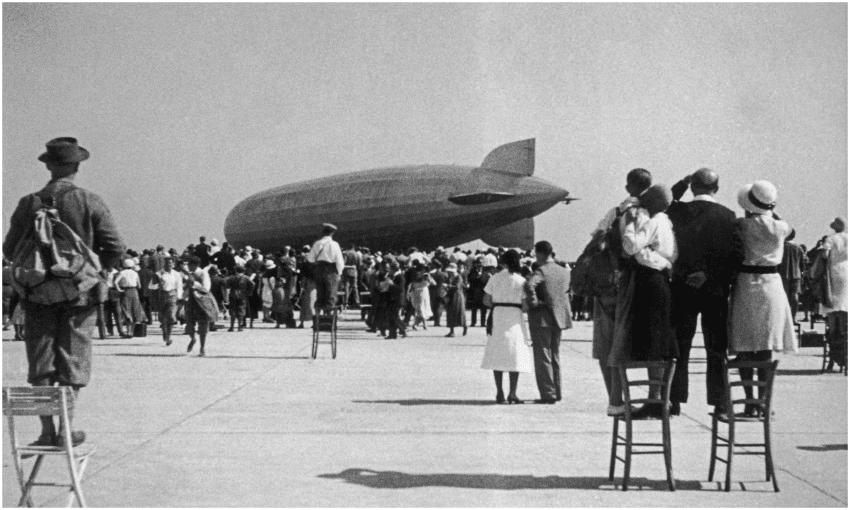To stamp out rampant rumours, we must turn to fearless and fastidious scholarship – and writers, says Jared Davidson.
On a spring morning in March 1906, people making their way to work along Oxford Street in central London were alarmed to see well-built men wearing Prussian army uniforms prowling up and down the pavement. From under their spiked helmets came warnings that a large army of their countrymen had landed on the east coast of England and was, at that very moment, sweeping westwards towards the capital.
To the crowd’s relief, the men were part of a publicity stunt for The Invasion of 1910, a novel by William Le Queux. Le Queux believed England was utterly unprepared for a German invasion. Capitalising on a rising fear of vulnerability, his novel was a sensational hit and catapulted Le Queux into stardom.
The Invasion of 1910 was only one of 300 invasion novels published in Britain in the first decade of the 20th century. Themes of invasion, espionage and the enemy within gave voice to the fears of their readers. But as Ian Cobain notes in The History Thieves: Secrets, Lies and the Shaping of a Modern Nation, before long many Brits genuinely believed that German spies lived among them. When Le Queux followed up his success with another bestseller, Spies of the Kaiser, he was inundated with reports of encounters with German spies. Apparently, tourists with cameras were in fact documenting the nation’s defences; foreigners enjoying a beer were planning to sabotage bridges; international students in London were studying the evil arts of bomb-making.
New Zealand was not untouched by this hysteria. Between July and September 1909, thousands of worried people across the country reported sightings of what they believed to be a German Zeppelin airship. Mysterious lights were seen hovering in and out of view on the horizon of the South Otago town of Kaitangata; at nearby Kelso in West Otago, a teacher and two dozen school children swore they saw a Zeppelin-like aircraft swoop low over the town. Police and a local posse set off to find the airship as more and more sightings streamed in. In the neighboring town of Gore, two mining dredge hands working the night shift watched in amazement as an airship appeared out of the dawn fog, its pilots clearly visible. The last known sighting was on 9 September at the North Island mining town of Waihī.
Like the invasion novels of Le Queux, the Zeppelin scare was caused by the hysteria surrounding the great power rivalry between Germany and Britain. A few months prior, Britain had decided to recall some of its naval forces and concentrate them closer to home, a decision that New Zealanders felt left them open to invasion. And as aircraft technology developed there were questions in local papers about whether German Zeppelins could be used to bomb cities. The author HG Wells horrified and thrilled readers with his 1908 novel The War in the Air, in which New York was destroyed by airships raining down bombs from above. Anxious and ready to believe anything, the sightings by the public were a remarkable case of collective delusion.
Over 100 years later, we continue to be plagued by panic and conspiracies in a time of crisis. Covid, 5G, QAnon, 1080 – the list goes on. Nor are the conspiracy theorists satisfied with our current moment. The past is also a battleground. Fanciful stories of pre-Māori European settlement and the “gravy train” of Treaty of Waitangi settlements flourish in some corners of New Zealand. Across the Tasman, writers such as Bruce Pascoe and his brilliant study of Aboriginal agriculture, Dark Emu, has reignited some of the darkest elements of the Australian history wars.
Yet as writers like Pascoe, Scott Hamilton, David Farrier, Tina Ngata and others have shown, fearless and fastidious scholarship can help stamp out such myths. Writing about the conspiracies that have taken hold within the world of Māoridom, Ngata advocates for a shift in power and resources to fight misinformation. Her call to “educate, educate, educate” is one writers, public historians, archivists and other cultural workers should heed. Because we have a unique role to play. And we have powerful tools at our disposal to do so.
For some of us, this may seem like crossing a political line. The myth of neutrality is a powerful one. The political choice of “not being political” – of taking the middle ground or not taking any ground at all – is deeply-rooted in many of our disciplines. Yet in these times, we should question whether neutrality and the middle ground is tenable. Because the middle ground is being swept away by racist and ill-informed rhetoric, with terrible consequences.
If such a call seems radical, it may help to recall the original meaning of the word: to get at the root of something. And if it’s true that at the root of many conspiracies are questions of power, then stepping into our power as writers and historians is the least we can do.
Jared Davidson’s book Dead Letters: Censorship and Subversion in New Zealand 1914-1920 was recently awarded the Bert Roth Award for Labour History. It is available from Unity Books Wellington and Auckland.

